A pie is a baked dessert with a pastry dough casing that contains a filling of various sweet ingredients.
Sweet pies have fruits, nuts, brown sugar, or sweetened vegetable fillings. It is usually served as snacks to events like house visits and family gatherings.
But if we take a look at the kitchen side of the dish, making pie is not as simple as it is.
Every expert baker also tends to make mistakes and even wonder where things went wrong. They don’t expect these things to happen.
One of the common issues about this is in the filling. The outer part of your pie looks great, but when you slice it, you could see that the filling is spewing out because it’s not thick and moist.
You may not know how to fix a runny pie yet, but you can always look for ways to solve it and identify how it started.
Your Pie Is Not Right
There are multiple reasons why the filling of your pie runs out. One is that your pie may not cooled enough yet when you add the filling. When you fill a pie, it should always be at room temperature.
If your filling is too hot, there is a possibility that it won’t have the time to set. When you pull the pie from the oven, wait for an hour for cooling.
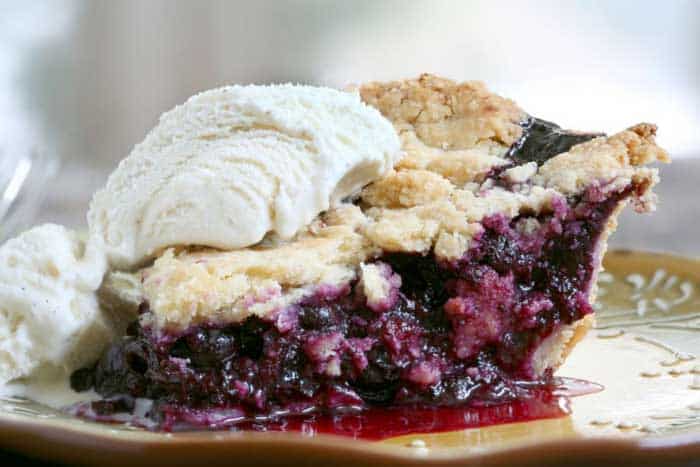
On the other side, your pie may not have gotten enough heat in the oven, not having enough time to boil.
When the filling bubbles, it activates the natural gelatin that is present in fruit and any thickeners that are added.
The main goal here is to see thick bubbles before taking out the pie on the oven for good. If you don’t see bubbles, give it more time to heat up.
Detailed Matrix
- Apples contain a lot of pectins, a natural thickener. They release juice when cooked but not nearly as juicy as stone fruit or berries.
- Stone fruits have less pectin than apples but more than berries. They need an in-between amount of thickener.
- Berries are the juiciest and need the most thickener. Frozen berries release even more liquid and require more thickener.
- Blueberries have the most pectin of the berry group. They need a bit less thickener than other berries.
- Fresh cherries need less thickener than canned or frozen cherries.
All these being said, the runny pie will still taste good.
Fixing Your Runny Pie
There are some easy steps to implement to get your pie filling look the way you want it to. You can get the same flavor without having to eat pie soup.
Since there are lots of options, it will be up to you as to which one you will follow.
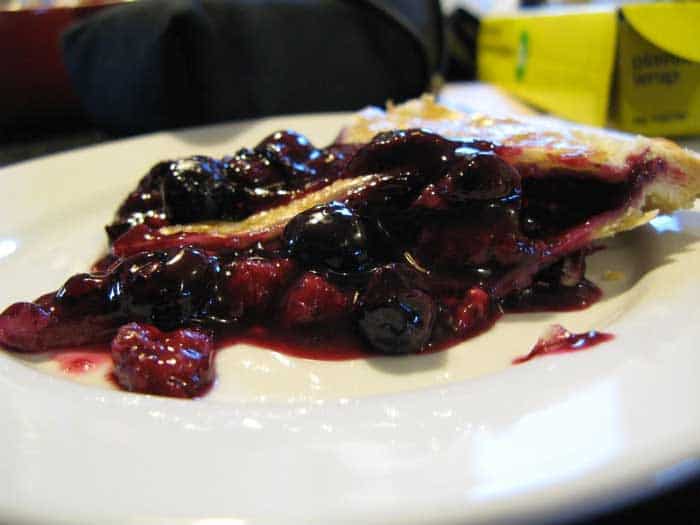
Some might be easier than others, but all should be an expected solution to the problem.
Cornstarch
A teaspoon of cornstarch for every cup of fruit that you have in your pie could help. Generally, a 9-inch pie should be able to hold around six cups of filling or so, which means that you need six teaspoons of cornstarch.
Cornstarch is a natural thickening ingredient that should give body to your pie filling without altering its taste.
Flour
It is one of the less preferred options. Some don’t like adding flour to their filling because it can make the appearance of the filling look a bit cloudy.
For every cup of fruit in your pie, you need two teaspoons of flour. The key here is to sprinkle the flour into the mixture. If you pour it all, it can clump up and make your filling gross in texture.
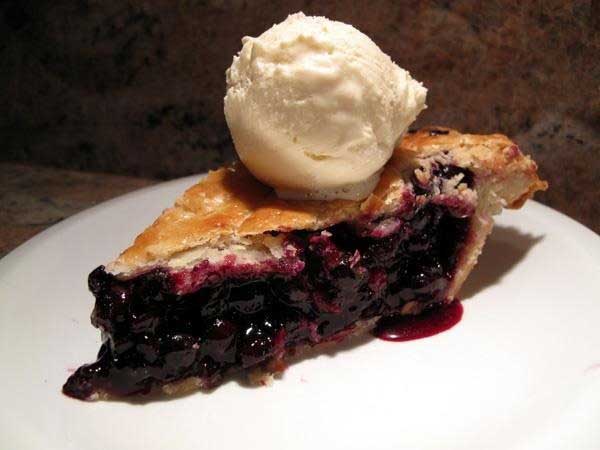
Flour should be an option when you cannot find any other ways to fix your runny pie. It is easy to add a greater amount of flour to your filling.
Instant Pudding
It is the favorite among the expert pie makers. Adding a package of instant pudding is not only a great way to improve the texture but also the flavor of your pie.
Instant pudding adds complexity to the dessert by utilizing the gelatin and allowing the filling to set.
Tapioca Flour
Instead of using granules to thicken the filling, use tapioca flour.
The directions can differ depending on what kind of tapioca flour you will use, so be sure to read the packaging carefully.
When you have mixed your tapioca flour and stirred thoroughly, let the pie sit for 15 minutes to allow it to dissolve.
Pie Filling Enhancer
It is a product available from King Arthur Flour that thickens fruit pie fillings. Its advantage is that it added ascorbic acid (a flavor enhancer), and superfine sugar, which prevents it from clumping.
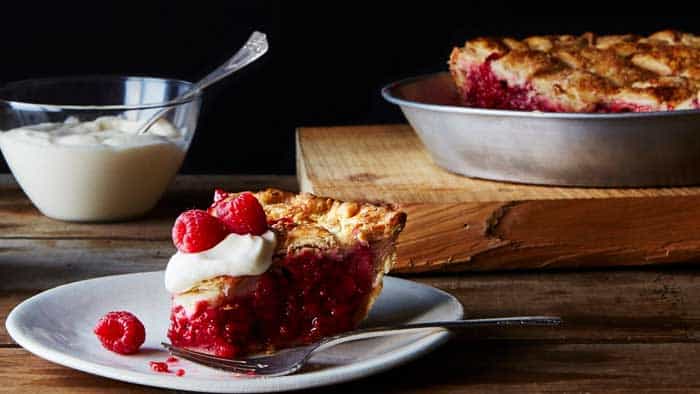
Pie filling enhancer is about half sugar, so you need this if you want to reduce sugar in your recipe
Instant ClearJel
It is also a product available from King Arthur Flour that keeps fillings thick throughout a broad range of temperatures. It makes it ideal for pies that are frozen either before or after baking.
Drain the Juice
It is a bit more complicated, but your filling will still be less watery. You can take the juice from the pie and mix it into the bowl with a pinch of salt and lemon.
After you sugar the berries, let it sit for 20 minutes or more until juice starts to collect at the bottom of the bowl. Drain it into a pan, reduce it, and add it back to the berries.
When you have finish mashing, pour the mixture into a strainer so that sugary juice can pass through. Letting it drain for 30 to 60 minutes is very important.
More Tips to Thicken the Juices
- Use a top crust with openings such as lattice or cut-outs. These allow some of the moisture in the juice to evaporate, thickening the filling. When baking a lattice, reduce the thickener by ¼ teaspoon per cup of filling.
- Golden crust and bubbling fruit are not indicators of a finished pie. It needs another 5 to 10 minutes to fully activate the thickener. It’s true, especially if you are using flour or cornstarch.
- Some types of fruit fillings will continue to thicken for 24 hours after baking. Instant ClearJel will increase the thickener by about 15% from day 1 to day 2. Quick-cooking tapioca and Pie Filling Enhancer does this by about 30%.
- Using flour or cornstarch will not thicken the pie filling further.
Can You Rebake a Runny Pie?
The rebake method could also work with many other pies that suffered from too little heat and ended up runny.
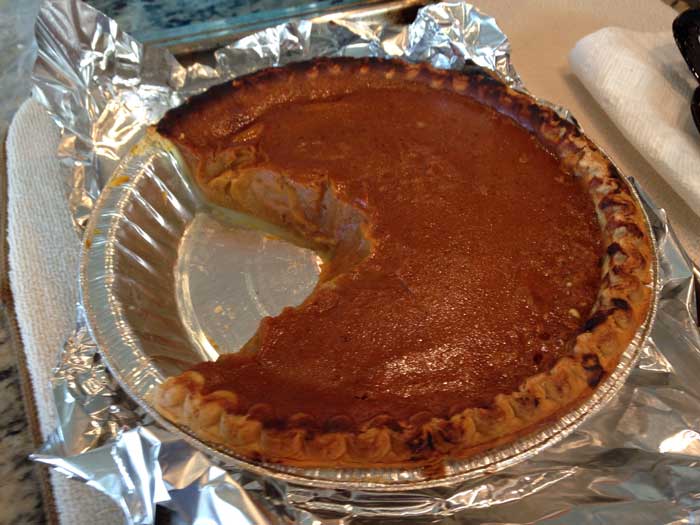
Just be careful about burning the crust, it may not be quite as good for the first time, but this option is better than tossing a pie.
Final Thoughts
The golden rule in pie baking is to “make it cold and bake it hot.”
If this makes sense to you, then it sounds great. It’s the precautionary step to avoid a runny pie.
The solution is within yourself. Figuring out the reasons of the problem will help you a lot in this scenario.
This summer, you are well on your way to baking amazing pies because you know how to fix the runny ones.

